
How should investors, startups, hyperscalers and everyone else weigh the impact of OpenAI’s $157 billion valuation? Is AI an existential game? Is another bubble forming? Read »

How should investors, startups, hyperscalers and everyone else weigh the impact of OpenAI’s $157 billion valuation? Is AI an existential game? Is another bubble forming? Read »
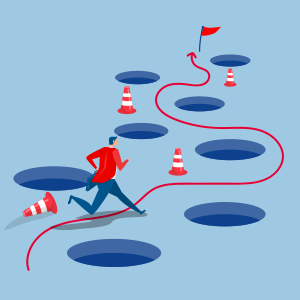
10 Strategic Planning Pitfalls to Avoid
As executives gear up for the 2025 strategic planning season, the process can feel like a balancing act. Developing a strategic plan that both drives meaningful change and satisfies stakeholders is a complex task, made even more challenging by the fast-evolving landscape of marketplace needs, industry trends, and technological advancements. Read »

Chat Commerce Empowers Customer Connections
Chat commerce is becoming mainstream as efficient, AI-driven customer engagement becomes a reality to position businesses to meet market demands effectively and capitalize on new opportunities. Read »
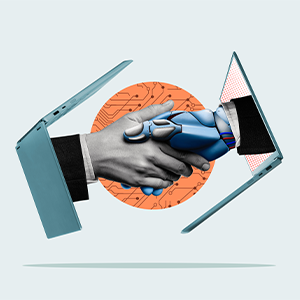
Why All Companies Should be Gaining Ground with Artificial Intelligence
While Artificial Intelligence (AI) is transforming industries across the globe, many businesses both large and small don't fully comprehend how this next-gen technology can benefit their own operation. If your business isn’t fully integrating AI into its strategy, it’s time to rethink your approach to digital transformation and unlock the powerful opportunities AI has to offer. Read »

Valuing AI, Cryptocurrency and Tech Companies That Are Literally Out Of This World
An Interview with Eric Sundheim, CEO of Mercovus Valuation Services. “Most people, even finance professionals, don’t understand that all methodologies are extrapolations or corollaries of the same essential methodology." Read »

The Intelligent Way To Harness Content For AI
An Interview with David Gould, Chief Customer Officer, EncompaaS, on the Opportunities, Challenges and Risks Amid the Rapid Rise of GenAI. Read »

Change is not a choice. But it is a challenge.
The perils of poor change management: What we can learn from three of the biggest company change disasters. Read »

Navigating B2B Marketing's Future
CMO Council founder and executive director, Donovan Neale-May, joins Leadtail TV’s Bryan Kramer to share insights on the evolution and future of B2B marketing. Read »

AI Adoption Angst: 9 Ways Leaders Are Suffering Inadequate Implementation
The AI Dilemma: Why leaders are struggling with deficient workplace adoption and employee upskilling opportunity loss. Read »

Quick Reaction Can Gain Traction When Market Demand Dips
The BPI Network caught up with Hayzlett recently to get his thoughts on the do’s and don’ts of managing through a recession. With economists and business leaders concerned about what’s next for the economy, the conversation is highly relevant to today’s business leaders. Read »

Digital Enterprise Execution: Ailing Or Excellent?
Are companies gaining business lift from the digital shift? With new software investments approaching $700 billion, how well are these solutions being deployed to improve business execution in critical areas? Read »

Big Company Frustration Over Applied Innovation
Big CPG companies face many hurdles on the road to strategic innovation, which has stymied their growth. But they can choose to overcome them by embracing an entrepreneurial mindset. Read »

Is Pervasive Patent Protection Good for Business?
Misconceptions around IP Endeavors can short-circuit valuations. Are we suffering from “innovation overload” or is pervasive and prolific patent protection good for business? Learn how to balance protection with healthy competition here. Read »

Crowdsourcing Funds to Power Sustainable Solar Energy in Emerging Markets
South African platform-as-a-service innovator invites individual investors to warm up funding for solar installations that have social value and impact in developing countries. Read »

Crisis Strategies: Expert Insight for Response + Recovery
Business leaders are grappling with the challenges of how to survive and then thrive in the face and aftermath of our global crisis. Learn what the experts say you should be doing now and in the future. Read »
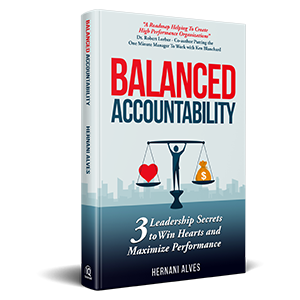
Maximize Your Business with the 3Ps of Accountability
A great leader loves their team similar to that of a parent loving their children. As a father, I hold my kids accountable because I know it’s the best way to help them become better versions of themselves. Read »

What's The State Of Today's Technological Development For Startups?
The technological evolution of business as a whole in 2019 has embraced a variety of technological features that are normally not associated with fields like eCommerce, Marketing and Sales, confirming how quick technological development has become. Read »

The Digital Convergence of Technology
The way organizations do business is constantly evolving. With the Internet explosion in the late 90s, we saw a rapid and drastic shift and a new era for businesses. That shift didn’t just change the way we communicated, but also shifted the focus from local to global and opened the doors to an entirely new era of commerce. Read »

Enterprise applications, while still in the early stages of adopting such intelligence, are beginning to witness how the application of Artificial Intelligence (AI) and Machine Learning (ML) can drive the innovation and transformation strategy of a business. Read »
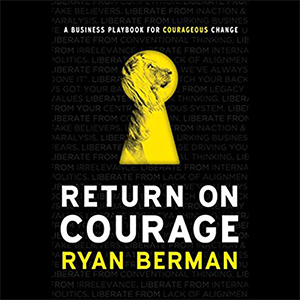
Courage: The Ultimate X-Factor And Your Competitive Advantage
There’s a noticeable deficiency of courage in the business world. It is absent from business models, boardrooms, company cultures, and mission statements. Courage has, in fact, gone out of style and out of practice—and many businesses are far worse for it. Read »
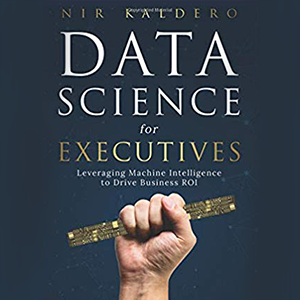
The Data-Driven Leader: Why You Should Always Ask for the Data When Making Decisions
How do you usually make decisions? Are you a shoot-from-the-hip kind of leader, who thinks best on their feet and tends to know the right decision to take intuitively? Alternatively, perhaps you’re someone who likes to consult with a team, develop a consensus, and move forward when everyone agrees. A third possibility is that you like to consider all the options in a meditative fashion, only to move forward when you feel comfortable that you’ve chosen the right one. Read »

How the Vine of Complexity Strangles Innovation
As organizations grow in size they often become complex, complicated messes. More and more structures, middle managers, coordinating functions, metrics, reports, and templates are added to enable control and transparency of performance across the expanding web of sub-businesses. This incrementally increases complexity within a business and inevitably creates an environment that strangles rich innovation, productivity and engagement. Read »

Impact of Growing E-Commerce on Logistics Service Providers
The exponential growth of e-commerce market has also benefitted the global logistics market in the digital world, and such synergy is not going away anytime soon. While the logistics industry boasts the expanding demands from urban areas, it is also under a constant pressure to keep up with the speed and efficiency of e-commerce. This commentary offers solutions for logistics services to be able to satisfy fast-evolving requirements and thrive rather than falling behind. Read »

Digital Therapeutics: The Future of Behavioral Health
Better work life health and wellbeing outcomes are within reach given a few favorable developments, but results won’t be truly meaningful unless there’s a greater realization of the indisputable linkages between a healthy workforce, the value of team resilience in the workplace, a mentally healthy business and a healthy bottom line. Read »
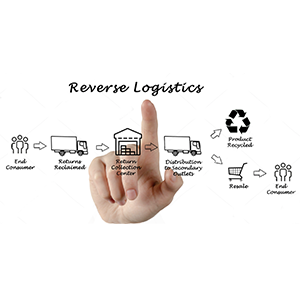
Acing the Returns Challenge in e-Commerce with Reverse Logistics
In today's fast-track e-commerce era, customers are certainly ruling the roost. The key to e-commerce companies for survival in this competitive ecosystem is customer-friendly practices such as easy shopping, free shipping, quick turnaround, and relaxed return policies. Read »
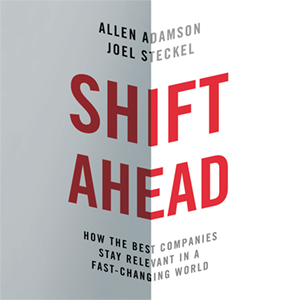
To Keep Your Business Relevant, Look to the Fringes
How is it possible to continually evolve at a pace that keeps you ahead of the curve? Why do some organizations continually evolve to meet the times, and others struggle to keep up? Among the key factors that separate the winners from the laggards are the ability to see what’s in the road ahead and the wherewithal to react quickly and effectively to whatever this is before it’s too late (wherewithal running the gamut from money to company culture). Read »

Accurate and organized data is a requirement for today’s logistics / supply chain manager. Business intelligence, such as algorithm-based optimal pricing models, pattern or usage based best practice recommendations, and real-time inventory management helps to analyze the critical areas of the logistics/ supply chain network. Read »

The world of logistics is moving to an on demand…call it an ‘Uberized’ model… where owning traditional assets is no longer a requirement to be a viable logistics company. This could look ideal or theoretical to a few but it is not impossible. Read »

Importance of Data Security in the GDPR Era: Force 4
Data. The very thing that lubricates the supply chain, especially in logistics and transportation, may cause the greatest security threat to the process it is enhancing. Data security issues in logistics can be identified and managed, albeit with some hurdles and planning. Read »

Robotic Process Automation in Logistics: Force 3
Robotic Process Automation, or RPA, continues to gain widespread existence in logistics & supply chain as well, to automate and expedite tasks that were once done manually. Logistics organizations can apply RPA in situations that integrate and automate data-driven activities. Read »

Continuity of supply is at the heart of supply chain management. Risks in the supply chain have the potential of interrupting the flow of goods and services, disrupting global operations. The impact on financial performance, customer operations, as well as other partners in the supply chain can be devastating. Read »
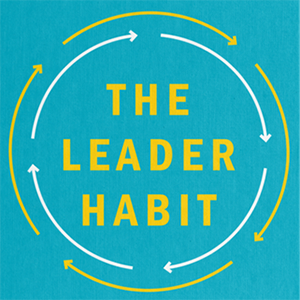
Three Hacks for Becoming an All-Star Delegator
Do you find it difficult to trust others to perform as well as you do? Do you end up checking every deliverable your team produces? Do you assign projects to people who struggle to handle the work? These are all signs that you are not delegating well. Read »
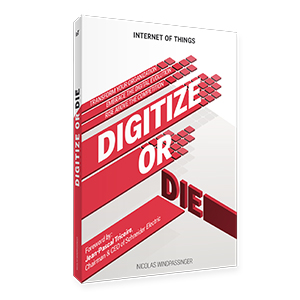
Where to look for the next "SpaceX Falcon Heavy" effect
Tuesday, February 6th, 2018, might well go down in the history books as a crucial day in the history of space travel. If you watched the launch of the SpaceX Falcon Heavy and the live streaming from the unusual passenger on board you may have experienced the feeling of witnessing something out of the ordinary as in previous historic moments in the exploration of space. Read »

Balancing Endpoint Security With BYOD
These days, businesses are founded on policies of BYOD. Startups and small businesses see the benefits of avoiding the expense of corporate tech and taking advantage of their personal tech–laden workforce, so instead of amassing a fleet of servers, computers, and office phones, they encourage workers to bring their own. Read »
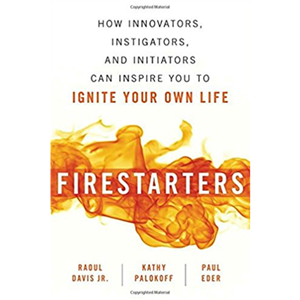
Unleashing “Aha” Moments by Eliminating Extinguishers
When Ellen Kullman, former CEO of DuPont, was recently interviewed for the book Firestarters: How Innovators, Instigators and Initiators Can Inspire You to Ignite Your Own Life, her answer to what extinguishes innovation in organizations came fast and furious. Read »

In this book, Hoffman documents how startups go through the process of radical innovation. He shows step-by-step how successful startups manage to rethink and reinvent their businesses. He also provides numerous case studies on startups that failed, and he explains exactly why they failed. The result is a detailed exploration of the process of innovation and what everyone, whether you're a CEO, manager or employee, needs to go through to make this leap forward in your thinking and approach. Read »

Tips for Recognizing and Rewarding Your Remote Workforce
No matter what industry your business is in, when it comes to achieving top results, this can never happen unless your team is engaged, motivated, and committed. However, while many organizations have a focus on enhancing corporate culture and appreciating employees these days, with so many more remote workers than ever before, it can be easy for people who are not in the office to get left out. Read on for some tips you can follow today to ensure all your staff members who work remotely get recognized and rewarded regularly. Read »
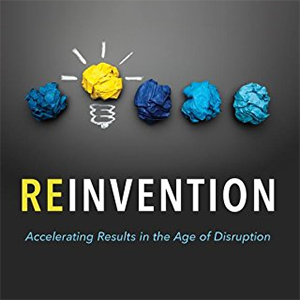
It is important to respect all mindsets. But it is true that some mindsets tend to create better results in today’s Age of Disruption. What happens when leaders, teams, and organizations (even societies) operate with distorted and outdated mindsets? Nothing good. Research shows that both tangibles (financials) and intangibles (morale) drop. Competing in the 21st century business ecosystem with faulty mindsets is a path to irrelevance and failure. Read »

Collaborative Contracts and Competitive Bidding: Not Mutually Exclusive!
Can collaboration and competition co-exist to create the best contract bidding relationships? The short answer is yes. In 2012, University of Tennessee researchers began studying how organizations use competitive bidding methods. Their findings? Organizations have traditionally thought of procurement as a “make vs. buy” decision. This was especially true as organizations began to explore outsourcing. Many incorrectly assume that if they “buy,” they should use competitive “market” forces to ensure they are getting the best possible deal. This is evident in organizations where procurement professionals are measured and earn their bonuses for achieving year over year cost savings. Read »

Cybersecurity Insights: IT Security Execs on Social Media
It’s rare that a day goes by without breaking news of some DDoS, ransomware, data breach, or other cyber-attack on a Fortune 1000 company. Clearly, doing business in the digital realm is neither safe nor secure. As a matter of fact, Cybersecurity Ventures predicts there will be $1 trillion spent globally on cybersecurity products and services over the next 5 years. Plus, the Bureau of Labor Statistics shows the rate of growth for jobs in information security is booming. Read »
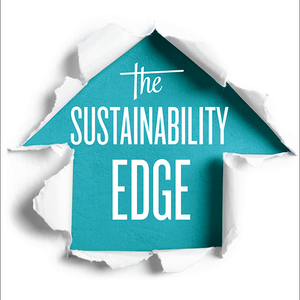
Embedding Sustainability into Your Company’s DNA
Today’s entrepreneurs and CEOs are facing challenges of unprecedented magnitude and number, regardless of whether they run a start-up or an ongoing business. These leaders understand that the end-goal is to ensure that, over the long haul, the business itself is sustainable. Sustainability must be viewed and managed in a holistic way, addressing all three pillars - environmental, social, and economic. Some leaders know what they want and what they need to do to improve their sustainability credentials, while there are many others just beginning to consider how best to address these daunting challenges. Either case is perfectly fine, if the leaders recognize that sustainability is a journey and that every company has ample opportunity to progress from where they currently are. Read »
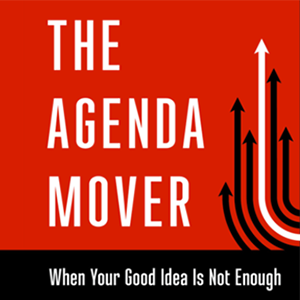
LEADERS CAN’T GO IT ALONE: 6 Steps to Building a Coalition
While there is perpetual discussion about what leadership is all about, in the final analysis, leadership is about getting things done. If you cannot move your agenda, you are not a leader. Moreover, an agenda mover knows that he or she cannot do it alone. How you go about conducting a campaign to gain support will determine whether you are a leader who can move agendas forward or simply a dreamer. To be leader who is an agenda mover, you need political skills to build a coalition as well as the managerial skills required to sustain forward movement. Read »

On Living Well: Evolving Population Health to the Next Level
People work for more than money. They work for a sense of accomplishment and pride in their contributions to a common goal. Some even define themselves by what they do. But money matters. Tremendously. It fuels lifestyle — or lack thereof. It’s also an underlying stressor that affects everything from workplace performance to home-life stability and personal health. That’s where employers enter the scene in developing benefits that address employees’ needs and stressors — physical, financial, career, social, safety and community — to optimize workplace performance. Read »

A Recent Study Shows Intellectual Property Supports 30 Percent of Jobs in the US Economy
Patents, trademarks, and copyrights are the primary mechanism for establishing ownership rights to the creations, inventions, and brands that generate tangible economic benefits to their owner. Intellectual property protection helps commerce in the US economy by providing incentives to invent and create by protecting innovators from unauthorized copying. IP also supports entrepreneurial liquidity through mergers, acquisitions, and IPOs and enables a more efficient market for trading in technology and know-how. Read »
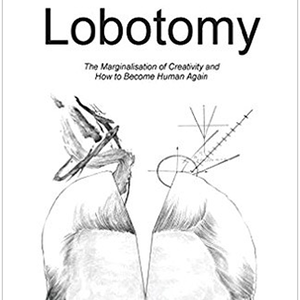
The Hole in Your Corporate Head
In the last 20 years, the interest in developing creativity as a component part of a business strategy has grown to become a priority for success. The investment in innovation processes adopted widely in the 1990’s recognised that there needs to be something in the barrel to innovate and just sitting round with a spreadsheet and a 'me too' idea wasn't going to work. Skyscraper organisations such as Apple, Google, Microsoft, Facebook and Amazon claim to be constantly embroiled in a whirlwind of creativity, their employees prodded to use their intuition and novel ideas to fund the demand for new products. Read »
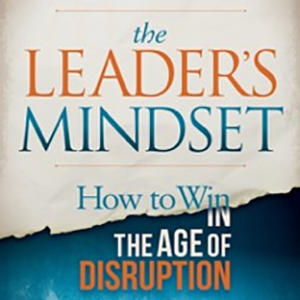
Imagine leading your organization up to ten times better than you do today or increasing your team’s success tenfold. 10X thinking is the golden thread that links all great leaders and is at the core of how to win in the age of disruption. My challenge had been set. I wanted to answer the question: “What must you 10X in order to succeed in a fast changing world?” Read »
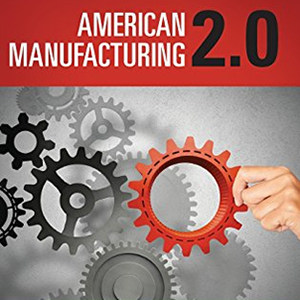
Only after you have grounded the organization in a culture based upon empowering values can you move on to the “hard stuff." Most CEO’s want to get to the hard stuff right away. They don’t want to bother with the “soft stuff” of values and culture. But what is the point of launching a new product if the organization values hanging on to the old ones? What is the point of implementing lean if most people could care less about waste and efficiency? Read »
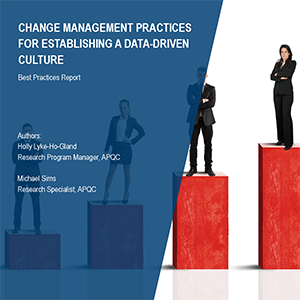
Tips for Constructing a Data-Driven Culture
Research Program Manager of APQC, Holly Lyke-Ho-Gland, conducted a survey that covers data and analytics to understand the common challenges and priorities of process and performance management practitioners in 2016. It is discovered while most organizations have embarked on their analysis journey, many still continue to struggle with embedding analytics into their analysis. Read »
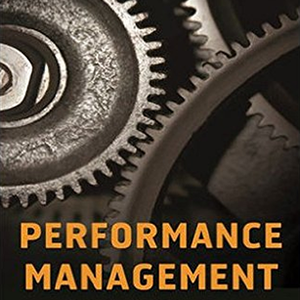
Enterprise and Corporate Performance Management (EPM/CPM) – Making It Work
What is the answer for executives who need to expand their focus beyond cost control and toward sustained economic value creation for shareholders and other more long-term strategic directives? EPM/CPM provides managers and employee teams at all levels with the capability to move directly toward the executive team’s defined strategies. Read »

CapSure Brings Disruptive Self-Insurance Model to Mid-Market Companies
Purpose-built, captive insurance companies are creating new wealth and improved coverage for many businesses. Captives are a disruptive force for change in the tradition-bound and highly profitable property and casualty insurance industry for mid-market companies. Read »

Former Sheriff Of Wall Street Joins Disruptive Financial Services Startup As It Break Growth Records
Greg is taking defined contribution help where it’s never been taken before…here, there and everywhere. As the author of an Op-Ed and New York Times Bestselling book “Why I Left Goldman Sachs.”, he’s advised legislators, regulators, pension officials, and corporate executives on financial policy and fiduciary duty. Read »

The CMO’s of Tomorrow Will Be Category Designers
In Play Bigger, the authors assemble their findings to introduce the new discipline of category design. By applying category design, companies can create new demand where none existed, conditioning customers’ brains so they change their expectations and buying habits. Read »

The Book that Harvard Suggested New CEOs Read is Emerging as a Key Reference to All Innovation Teams
Ronald Brown’s “Anticipate. The Architecture of Small Team Innovation and Product Success” unearths timeless, real-world principles of innovation that are too often forgotten – or were simply hidden in the pre-internet fog. At its heart, Anticipate provides the “time-tested” innovation recipe. Read »

SAP’s Maggie Fox: “Digital Transformation Really Comes Down to People”
As the Senior Vice President of SAP Experience, Maggie Fox and her team are responsible for global content production as well as SAP’s digital experience and award-winning brand journalism program. In the third year of a highly successful company-wide digital transformation of their online customer experience, Fox is proud of their achievements, but notes they will continue to transform as customer needs evolve. Read »

How to Lead in High Turbulence
IMD Professor, Tawfik Jelassi, experienced more than just acquiring the position as the Minister of Higher Education, Scientific Research, and Information & Communication Technologies of Tunisia. Read how Tawfik summersizes his personal journey with five lessons he learned through leading in a high turbulence environment. Read »

Do You Have the Right Implementation Team?
For the last 20 years, R&D Director at IMD, Marco Mancesti, has worked closely on the performance level of several hundred key employees working on strategic initiatives. He has observed that when things go wrong, in most cases it is related to one or several of the following dimensions, which he refer to as the PIKES model. Read »

XMPro is rapidly gaining industry recognition for real-time data application solutions that go far beyond the traditional dashboard and visualization of incumbents – effectively serving as the “conductor” in the faults response orchestra for asset-intensive industries. Read »
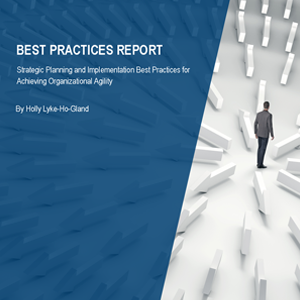
What's Slowing Down your Organization's Agility?
Organizational agility allows companies to keep pace with the opportunities and threats created by growing customer demands and disruptive changes such as big data and the internet of things. But in order to succeed in this endeavor, organizations must not only track changes in their business environments but also nimbly change direction and implement new initiatives in order to avoid risks or achieve competitive advantages. Read »

From the boardroom to the classroom, Metro Nashville Public Schools (MNPS) leaders have devised and implemented game-changing, population health promotion innovations connecting teacher health and wellbeing with student attendance, morale and academic evaluations. Read »

Jacob Lief’s new book – “I Am Because You Are” – directly challenges the risk-averse culture of the non-profit world, and champions a new path in which Africa’s most vulnerable children should receive “everything.” Read »

IoT Social Media: Insights Beyond the Buzz
With technology innovation and transformation at the top of the minds of executives across industries, the Internet of Things (IoT) is quickly rising to the forefront of conversations across social platforms. But with all the buzz, how can these executives get beyond the noise and identify the insights that will drive real business value? Read »

Shannon Schuyler – Chief Purpose Officer for PwC – says trust in a company is most closely tied to its purpose, and that companies that successfully integrate inspiring purpose with their core business mission will likely see long and short-term benefits in this landscape. Read »
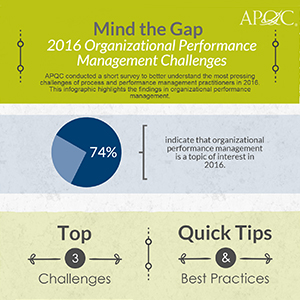
Struggling to Find the Right Measures?
Over the past few years, an increasing number of companies have embarked on transformational changes, but research by APQC shows that only about 30 percent of those organizations are happy with their change program’s success. It is typically not the redesign plans that are the source of the frustrations; rather it is the implementation that is directly affected by organizational performance and change management practices. Read »

Mayo Sharpens Mindful Wellness Vision: A CEO's Perspective on Healthy Living Innovation
Rochester, Minn., well known as a destination medical center, is also fast becoming a worldwide haven for mindful worksite wellness thanks to the famed Mayo Clinic, which is melding the best of eastern and western medicine in a compelling mind-body approach. Read »

2016 is here. Worldwide, managers are setting SMART (Specific, Measureable, Achievable, Relevant, and Timely) goals, expecting these to make this ‘the year’ to revitalize or transform their businesses. Instead, most of these professionals should retire SMART – or at least rescind its standard operating procedure status. Read »

More Than Copiers; Xerox Leads Innovation With Cutting Edge BPO
Xerox has been a global icon of innovation for 75 years. Its army of scientists and engineers have invented everything from xerography to the Ethernet and even the computer mouse. But the company’s recent reinvention of itself – from the famed copier/printer maker, to the world leader in business process services and document management – must, itself, surely rank among the world’s most remarkable examples of successful innovation delivery. Read »

Exploring What's Possible With an Innovation Insurgent
To imagine a future is easy, to imagine one that matters is another story. The world is changing fast. I see it everyday in the articles and stories that get shared on my self-curated Twitter feed, as well as the conversations I have with people trying to change the world. For example, articles on how a future without cows is near, another on how our future food intake will include bugs, and another on how a self-driving car was pulled over. These are just articles related to the future of food and transportation, dig deeper and you'll get a picture into how various industries are changing and how others are being created in front of us. Read »

The Vision of Transformation Requires Action, Not Just Words
Around the world, CIOs preach the benefits of transformation as choirs of business executives back them up. This change will yield faster app development. It will improve customer service. It will tap into the swelling river of data. It will build a competitive advantage. And, most of all, it will widen the profit margin. Read »

World Leader in Fleet Management and Telematics Enters the US Market
Armed with the world’s most advanced vehicle telematics technologies – innovated in response to high crime rates in South Africa – Cartrack is expanding to the US, and other key global markets, as a leading fleet management and insurance solution Read »

How a New Effort to Find Life Beyond Earth Echoes Disruptive Innovation in Business
The likely discovery of life beyond the solar system will be directly attributable to the extraordinary, unheralded success of female astronomers, who are leading the effort – and businesses should embrace a similar influx of female entrepreneurs to see similar rewards Read »

How Bureaucracy Smothers Innovation
Perhaps the biggest enemy of innovation within large companies is bureaucracy — the concentration of decision making in a top-down management structure. Read »

How Shoppable is Turning Content Everywhere into a Three-Click Checkout
In a showcase model of digital convenience, tech company Shoppable unveils its “Magic” product to the DEMO audience – and tells BPI how almost every online reference to your product can now be converted into a sale. Read »

Manage and Lead: The Importance of Integrating Skillfully Looking Ahead Into Your Daily Reality
You’ve undoubtedly discussed this question before: what is the difference between a manager and a leader? It’s one of those ice-breaking questions often asked at off-sites to introduce the concept of leadership. Interestingly, the world of leadership theory is relatively young. Read »

How to Make a Business Case for Learning and Development
Although more businesses than ever now appreciate the benefits of learning and development, there are still those digging their heels in and ignoring the evidence that a robust learning and development programme offers a great deal of benefits to companies of all kinds. Read »

A Communication Framework for Change Agents
While organizations thrive on change, people often don’t. People don’t embrace change at the same pace (and some never will). How you communicate new ideas plays a huge role in how well they're received and how quickly they're adopted. Read »

The 2015 consumer study by research consultancy Brand Keys to rank the top 20 tech innovation brands reveals that seven newcomers – including collaborative messaging platform Slack, audio platform SoundCloud, and Tesla Motors, the inventive manufacturer of premium electric vehicles – are now seen as among the most admired brands for delivering on a new set of consumer expectations and experiences. Read »
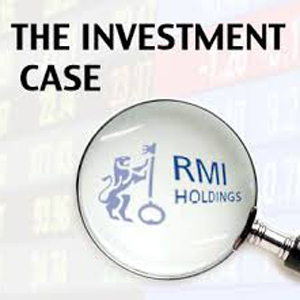
Looking to Build for the Future, RMB and RMI Holdings, South Africa’s Top Investment Group in the Banking and Insurance Sector, Meets With The SABLE Accelerator, BPI Network, and Silicon Valley Connections In Search of Disruptive Entrepreneurs in the Financial Services Market. Read »

The New Era of Global Supply Chain Ecosystems- Complex But Strategic
Supply Chains are the arteries of today’s globalised economy – they enable the international trade flows that empower global commerce. Today’s Supply Chains are evolving to reflect the increased complexity of world trade – a highly competitive, super connected, fast changing and increasingly volatile global environment, which is progressively more difficult to predict. Read »

Staying ahead of the game and achieving success is difficult when there are so many simultaneous disruptive forces rendering it impossible to extrapolate recent experience into the future. With organizations subject to ever increasing scrutiny from multiple internal and external stakeholders in a transparent world, the biggest challenges straddling borders and boundaries, leaders must be open to continuous learning and adopting new skills from a whole range of disciplines. The book is a guide to a more sustainable and inclusive future in which solutions to the wicked nature of the world’s problems are to be found via collaborative approaches between business, government and civil society. Read »

How One African 'Misruptive' Innovation Company is Storming a Key US Market
A South African start-up is rapidly defining a new kind of business disruption in the US tech sector. Call it “mis-ruptive” innovation: breaking into a major new market by accident – and then storming that market by sticking to the same, humble business model devised for the original market. Now, this Johannesburg-based application delivery controller (ADC) start-up has 10,000 customers in 50 countries, including Intel and euroVPS. But what makes Snapt successfully misruptive is that – despite stumbling upon the lucrative new market of large enterprises – they have kept their misdirected, freakishly generous pricing and business model. Read »

New Disruption Study: How Entrepreneurship is Driving Corporate Reinvention
With the inevitable rise of entrepreneurship and startups driving customer innovation, incumbent companies have begun adopting some of their techniques to either catch up or really stimulate transformation within the enterprise. A recent report by BPI Network called “Start-Up Innovation: Inspiring Business Transformation,” examines the impact of digital disruption on global enterprises and markets. Read »

Praying for the Engagement of Disengaged Millennial Talent!
In an age where Millennials are changing jobs almost as often as they change underwear, leaders are struggling to find ways to actively engage and bond with Millennial talent. And with the most recent Gallup Research showing that 70% of employees are actively disengaged, these new engagement tactics are more important than ever. In this commentary, Dõv Baron discusses how employers can give their workforce purpose and find engagement that sticks! He wraps up the article with three vitally important points for all leaders to consider in their company's engagement strategy. Read »

Is VUCA the End of Strategy and Leadership?
In the current era of volatility, unpredictability, complexity and ambiguity, managers need to adapt the way to navigate. We’ve all been in meetings during which two parties were arguing about whether they should spend their time discussing strategy or focus on organizing immediate action. This kind of debate is likely to become more and more frequent. So change is not new, and the influence of external forces is an often-examined topic in academic literature. For example, Michael Porter’s five forces analysis, by looking at suppliers, buyers, new entrants and substitute products is still extremely relevant in determining the competitive intensity and thus the attractiveness of an industry. So what is different now? Read »

How Mindful Innovation is Accelerating the Rate of Health & Performance in the Enterprise
BPI Leader and Game Changer Les C. Meyer discusses his work on Mindful Innovation in the Workplace and how it is driving change and accelerating the rate of health and performance improvement innovation leadership in America and around the globe. His vision is to refine organization health strategies, reveal population health improvement interventions and weigh productive advantage business models to improve the economic wellbeing and quality of life of consumers worldwide. Read »

Forget ROI: Aetna CEO's Perspective on Wellness & Functionality
A broader value proposition to achieve better health and functionality has emerged in the corporate wellness space. Instead of discussing ROI in the context of healthcare costs, CEOs are putting their people — and their functional well-being — at the core of a mission to expand the rigorous, more relevant value-on-investment (VOI) analysis to include organization health business impact. Les. C. Meyer, BPI Leader and Game Changer, interviews Mark Bertolini, CEO of Aetna, in a thought provoking discussion on Mindfulness at Work, a breakthrough program piloted by Aetna, and it's outcomes. Read »

Why the Book "No More Business As Usual" Matters
The last decade has witnessed revolutionary changes to business across the globe. Today’s business leaders have to wrestle with diverse, intricate and multifaceted challenges: globalization, technological advances, digitization, climate change, organizational sustainability, a global credit crunch—the list is endlessly growing. There are substantial and vast changes yet to come that will disturb and alter every aspect of business and transform everything the way we know it today. Organizations must constantly change if they are to flourish and thrive in an increasingly precarious business environment. Read »

If we had our way, we would eliminate the titles of CEO, president, COO, or general manager. There are two distinct types of leaders in all small businesses: the “Visionary” and the “Integrator.” One sees the future, and the other makes it happen. These two roles could not be more different from each other. That is why it is magic when they work well together. Famous examples include the combination of Walt and Roy Disney at Disney, Henry Ford and James Couzens at Ford, and Ray Kroc and Fred Turner at McDonald’s. While you may think of these as large companies, they were small once. We point them out since they illustrate how vital the V/I (Visionary/Integrator) combination was in their early growth. Read »

It’s Time for Startup Founders and Investors to Think Bigger
Now begins the era of the alternate economy. It is entirely possible to create a virtual economy, featuring a virtual currency and even an element of direct-democracy, on a global scale and with minimal funding. Why not create a system that allows you to form mutually-beneficial relationships with new people? This concept can be the core of an alternate economy and we can call it the People Economy. While today’s Corporate Economy is structured around the relationships people have with companies, the People Economy emphasizes dynamic economic relationships between people with compatible wants and needs. Read »

Nike, Microsoft, and the NFL Tackle Innovation
What do Nike, SG Helmets, and Microsoft have in common? They are driving innovation in the products used by players and coaches in the National Football League (NFL). Although the game itself hasn’t changed dramatically over the years, today’s players in the NFL can play in greater comfort and safety, thanks in part to 2014 Edison Award winners Nike and SG Helmets. Read »

How To Figure Out the Crucial First Step to Innovation
When it comes to innovation, one of the biggest hindrances a company can face is actually its own mindset. While it’s immensely challenging to develop and deliver innovative products and services in today’s world, it’s impossible to do so if a company actually believes it’s not capable of delivering a breakthrough. Learn about how Kraft’s VP of Product Innovation, Barry Calpino, grappled to create a plan to bring Kraft from worst to first—to move from launching 130 tactical, uninspired, half-efforts to confidently bankrolling 12 big initiatives that would generate unprecedented successes. Read »

The Necessity of Digital Business Transformation
Companies need to embrace a digital presence for business transformation. But how can this be done most effectively? Digital transformation is not about putting an online wrapper around the existing product suite; it’s about fundamentally rethinking the company, from customer acquisition and retention, to market expansion and product innovation. BPI Leader Adriaan Bouten discusses the vital importance of digital transformation and highlights key steps in ensuring its successful implementation. Read »

Intrapreneurs: A great idea but inside a big company, can they possibly succeed?
Can intrapreneurship help fast track new offerings and explore innovation opportunities? And if so, how can we measure an intrapreneur's mindset? In other words, how can we turn that thinking into a science that is replicable and actionable? At what point do you judge success or failure, when either condition is just around the bend? Andrew Simon explores the reasons behind why intrapreneurship has failed at large companies and offers up some ideas to consider that could allow for effective intrapreneurship, even within a large organization. Read »

Cognician’s Path to Innovation Came from Personal Interaction
Thanks to an inspiring personal interaction, Cognician Inc., a web-based e-learning platform, was developed to guide users through a conversation desgined to spur innovative, higher-order thinking. Cognician is changing the e-learning landscape with interactive chat capabilities that create a more immersive experience. The founder’s innovation was the result of a real-world chat by practicing a modern incarnation of the Socratic method of conversation. But once you’ve made your first innovative leap forward, how do you keep the momentum going? Read »